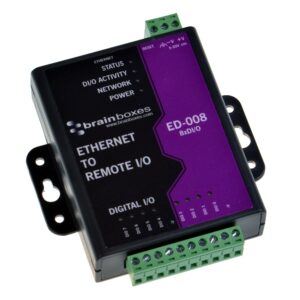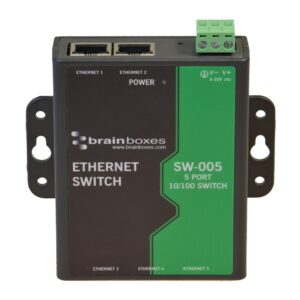Mechline use a Brainboxes’ remote I/O solution to monitor outputs from their machine. This data can be used to calculate important information about the machine’s usage, aiding the customer to optimise their operation.
“I wish I had discovered this product a year ago!” – John Towersey, Mechline Developments Ltd.
The output drain minus the input of clean water is used to calculate the food waste volume which is then reported to the client so they know how much waste they are recycling. The lid openings and the number of reverse operations (when machine has been overloaded) tells the client how the machine is being used. To unlock the hidden data from your machines talk to our sales team today!
Two years ago, Brainboxes started working with Mechline, who had been struggling with machine monitoring. They needed to get their machine insights into the cloud. Mechline’s Waste2O units are installed in hospitals, hotels and shopping centres, where unused food would otherwise be thrown away costing the company and entering landfill. Any organic waste is put into the Waste2O units where enzymes break it down so it can be safely disposed of as harmless waste water direct to the drain. The machine uses a PLC – technology their engineers understand well.
One of the basic questions the client wants answered is how much food waste are they recycling? John Towersey from Mechline identified that they could easily calculate this from signals on the Waste2O unit; by using the output drain minus the input of clean water it would equal food waste volume. The information was there locked in the machine as a simple output signal, but they needed to get it in front of the client in a user-friendly format.
This is typical of any machine or factory line, there are outputs everywhere that an any electrician could break into and feed through a monitoring device without interference to the normal operation of the line. PLCs emerged before networking and ‘big data’ and they simply approach the production line with a different goal. While PLCs perform deterministic activities, today’s process engineer and factory manager want to see an overall analysis of their production line and productivity, and this is where PCs and their capacity for data analysis come in.
Likewise, it is important that PC technology and its integration meets the rigorous requirements of industry. Mechline had tried various pieces of hardware for monitoring, notably an Arduino with a Bluetooth shield, but the device wouldn’t store data on reboot and the wireless signal was unreliable. The retention of data and a solid connection are clearly important in commercial applications and essentially, they were using maker/prototyping kit in what needed to be an industrial set up.
Brainboxes worked with Mechline to bring that PC connection and give visibility of the PLCs outputs without compromising on reliability. Once the machine signals are on the network they can be in the cloud and the client can pull down the information they need. As Mechline’s skills were with PLCs they needed help from Brainboxes to get the software side right. Software is something of a personal passion for Luke Walsh, and since he took over as MD of Brainboxes an increasing focus for the business; “I believe software skills will become as critical as being able to wire a plug for the next generation of engineers”.
Data generated from machine monitoring provides huge long term advantage to the machine manufacturer. In the longer term, by aggregating data from many machines, Mechline will be able to improve their product performance and move to preventative maintenance. Analysing fault patterns can inform the design process and lead to better performing more reliable machinery. Likewise, parts of the machine which are fault free (and potentially over-engineered) can be re-spec’d correctly. A preventative maintenance model, will allow Mechline to service their machines in advance of faults occurring, and change the maintenance schedule to suit the lifespan of each machine sub-assembly.
-
ED-008
$147.02 Add to cart -
SW-005
$50.84 Add to cart


